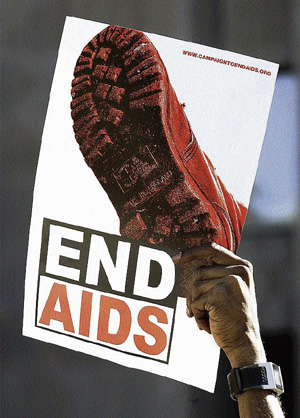|
Zimbabwe ravaged by HIV epidemic
The AIDS epidemic is raging throughout southern Africa, and Zimbabwe
is one of the world's worst hit countries. A quarter of the adult
population is infected. Up to a fifth of the country's children
have lost at least one parent to the disease.
 |
| This protester demanding that governments divert
military spending to AIDS/HIV research and treatment, sends
a poignant message to Jamaica's sex workers. |
The pandemic is having profound effects on the country's health
system, economy, and development. AIDS is touching everyone in Zimbabwean
society. Already, 2,500 people a week are dying of the disease,
and the figure is expected to rise rapidly in the coming decade.
An estimated 2,000 people in Zimbabwe die weekly due to AIDS-related
illnesses
high infection rate
Zimbabwe has a high infection rate for HIV, the virus that leads
to AIDS. Experts say a combination of economic, social and cultural
factors have contributed to the alarming spread of the disease in
this country, where it is primarily transmitted through sexual intercourse
and, in some cases, by infected mothers to their children during
pregnancy.
It is estimated that 25 percent of people between the ages of 25
and 45 are infected with HIV. In some of the areas where the plan
is working, the infection rate is as high as one in three.
AIDS has been accepted as both a public health and development
problem. The HIV epidemic began in the early 1980s, spread rapidly,
and it is now estimated that over 2,000 people countrywide die every
week due to AIDS-related illnesses. The developmental consequences
are seen in the reversal of gains in life expectancy, which is now
down to 46 from 54 in 1992.
The young have not been spared by this epidemic. The increasing
impact of HIV/AIDS in Zimbabwe is seen in the rising numbers of
orphans, street children, reports of sexual abuse of minors, teenage
pregnancy and sexually-transmitted incidences among children and
young people.
|

